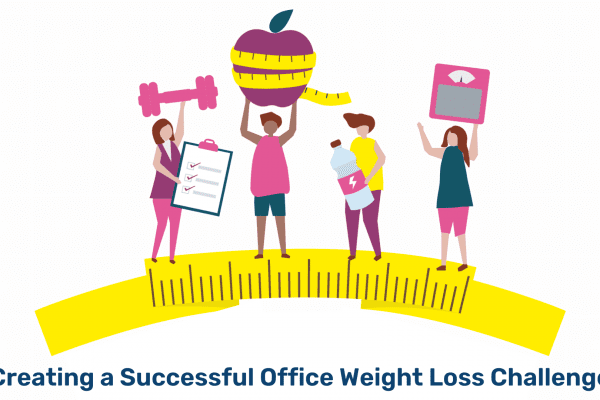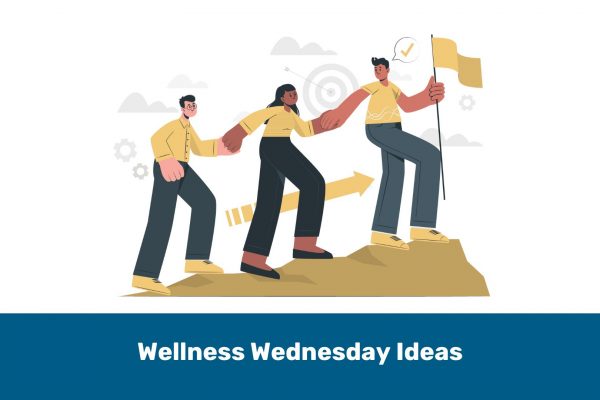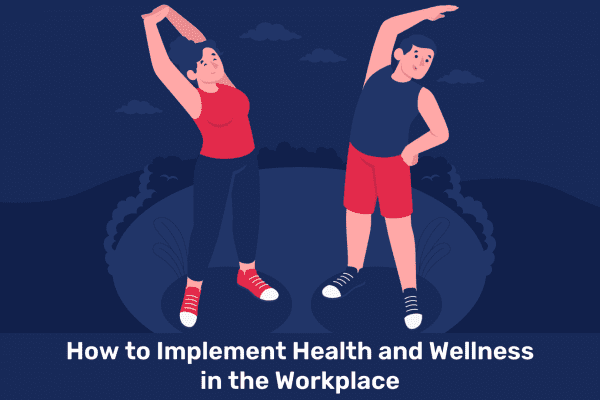Introduction
With the rise of sedentary jobs, employee inactivity has become a growing concern in the modern workplace. Prolonged sitting can lead to a host of health problems, including obesity, heart disease, and diabetes. Fortunately, research has shown that even moderate exercise, such as walking, can have significant health benefits for employees.
Walking is an accessible and easy form of exercise that can be incorporated into a daily routine. Studies have shown that walking can help to reduce stress levels, boost mood, improve cardiovascular health, and even enhance cognitive function. Furthermore, walking has been shown to improve productivity and creativity, making it an ideal activity for employees during the workday.
Studies routinely find that a simple daily walk can reduce the risk of stroke in both men and women, reduce the days spent in a hospital each year, and can even lower your risk of death by up to 39 percent when compared with little to no physical activity.
In this context, many companies are encouraging their employees to incorporate walking into their daily routines by offering incentives, creating walking challenges, and promoting active lifestyles. By prioritizing walking and other forms of physical activity, companies are helping their employees lead healthier and more productive lives.
Corporate wellness programs are becoming part of every organization. By being proactive and incentivizing employees to be more active in their day-to-day life, whether they are working at home or at the office, companies are fostering a healthier, happier, and more productive work environment.
By designing a steps challenge at work, organizations can motivate employees at every fitness level to get healthy and have fun in the process.
What is a Corporate Step Challenge?
It’s as simple as it sounds: a walking challenge at work in which employees compete, either as individuals or as teams, to walk as many steps as they can throughout the day.
Fortunately, you don’t have to count every single step; with Woliba, you can easily sync your Fitbit or smartphone, the vast majority of which have built-in pedometers that automatically keep track of your steps.
Each employee’s total daily steps will upload daily to a leaderboard, so everyone can keep track of who is ahead, creating a sense of motivation and competition.
How long do you want your step challenge to last—a month? Two months? All year? It’s entirely up to you. As everyone competes, your organization will see greater morale and retention, while your employees will see improved cardiovascular health, increased immunity, reduced body fat levels, improved bone health, better endurance, and lowered risk of high blood pressure, diabetes, and joint pain to name just a few chronic conditions.
Also Read:
Creating a successful office weight loss challenge
Why is Steps Challenge Important?
A steps challenge is important for several reasons:
-
- Promotes Physical Activity: A steps challenge encourages employees to engage in regular physical activity by tracking their daily steps. It motivates individuals to increase their movement and take more steps throughout the day, which is beneficial for their overall health and well-being.
-
- Increases Awareness of Sedentary Behavior: Many employees have sedentary jobs that involve sitting for long periods. A steps challenge helps individuals become more aware of their sedentary behavior and prompts them to take breaks, move around, and incorporate physical activity into their daily routine.
-
- Enhances Cardiovascular Health: Regular physical activity, such as walking, has positive effects on cardiovascular health. Engaging in a steps challenge can improve heart health, lower blood pressure, reduce the risk of heart disease, and increase overall fitness levels.
-
- Boosts Energy and Productivity: Physical activity releases endorphins, which are known to improve mood and increase energy levels. Participating in a steps challenge can boost employee energy and productivity, leading to better job performance and increased focus at work.
-
- Fosters Team Building and Engagement: Steps challenges often involve teams or groups of participants. This fosters a sense of camaraderie, encourages teamwork, and strengthens relationships among employees. It can also increase overall employee engagement and create a positive and supportive work environment.
-
- Supports Weight Management: Engaging in regular physical activity, such as walking, can contribute to weight management efforts. A steps challenge provides individuals with a goal-oriented approach to increase their daily activity levels, which can help in maintaining a healthy weight or achieving weight loss goals.
-
- Provides Incentives for Participation: Steps challenges often come with incentives or rewards for participants who achieve certain milestones or goals. These incentives can further motivate employees to increase their physical activity and strive towards achieving the challenge objectives.
Also Read:
- 5 Best 30 day Wellness Challenge Ideas for the Office
- Top 6 Workplace Fitness Challenge Ideas for Remote Teams
Tips to Start a Step Challenge
It’s best not to drop an office walking challenge on your employees without some explanation. After all, walking seems so ordinary.
Many people simply don’t understand that you can see amazing health benefits without stepping foot in the gym or on the track.
With even a cursory amount of education, including the information found in Woliba’s wellness library, your employees will be far more motivated to squeeze in those 5,000, 7,500, or even 10,000 steps per day.
Second, make sure everyone who wants to compete is able to. That means circulating a list of compatible fitness devices that sync with your wellness software.
Don’t get overwhelmed by the sheer amount of options; when it comes to counting steps, you don’t need anything fancy. Any iPhone and the vast majority of Android smartphones can sync seamlessly with Woliba.
1. Understand the Barriers to Success

It seems simple, right? Walk 10,000 steps per day and you’ll stay in great shape. Except, it were that easy, we wouldn’t need step challenges to motivate us to hop off the couch.
According to the Centers for Disease Control and Prevention (CDC), nearly two out of three American adults don’t exercise. Here are the top 10 excuses:
-
- Not enough time
- It’s inconvenient
- Lack of motivation
- Hate exercise
- It’s boring
- Lack of confidence in their abilities
- Fear of injury
- Lack of goals
- Less encouragement and social support
- Shortage of facilities
While planning and implementing your workplace walking challenge, you will have to address each of these barriers in some form or another. Fortunately, the gamification features of a wellness program like Woliba can take care of most of these for you.
For instance, create motivation and minimize boredom by fostering friendly competition. Make the barrier to entry low—all you have to do is walk—to address confidence issues that people face when considering an exercise program while making participating convenient.
Choosing a longer timeframe, such as 30 days, also ensures people have time to participate. Walking is simple and easy, so even those who hate exercise, lack a gym membership, and try to avoid injury can join in without much fuss.
Finally, a robust recognition program keeps participants goal-oriented, on-track, and recognized for their achievements.
2. Keep It Short

Why have a 30 day steps challenge when it can be 30 weeks? While extending the timeframe might be beneficial for organizations that have successfully implemented step challenges in the past and boast especially motivated employees, most organizations see the most success with short bursts of competition.
Simply, competitions that last more than a month or two can easily be forgotten. Life gets in the way, deadlines pop up, and the first thing likely to get pushed aside is a step challenge that doesn’t end for months.
Shorter challenges create momentum and a sense of progress, helping to ingrain new positive behaviors and discourage unhealthy ones. Make your challenge too long and you risk boredom and burnout.
Also Read:
5 Best 30-Day Wellness Challenge Ideas for the Office
3. Keep Step Challenge Simple

Movement challenges often get complicated, with multiple variables including steps, speed, and minutes. Adding multiple metrics not only makes it harder to plan, execute, and manage a wellness challenge, but makes it more difficult for employees to see who is winning.
This can be a death knell for motivation and engagement. Make sure you also do not rely on one source of data.
Some organizations have been known to purchase wearable devices, such as Fitbits, for their entire workforce, therefore relying solely on one source of data for movement challenges.
This presents countless problems, from convincing employees to wear a new device every day to troubleshooting tech problems. Keep it simple and rely on ubiquitous smartphone apps to do the hard work for you.
4. Make the Rewards Exciting

Imagine working hard every day to crank out 10,000 steps, hiking down the street in the rain instead of watching Netflix, and taking the steps instead of the elevator every day to win your company-wide movement challenge only to find that the prize is something lame, like a water bottle or fanny pack.
Second, make sure your prizes align with the positive habits you are trying to instill. So instead of gift certificates to Krispy Kreme or Cheesecake Factory, maybe opt for a reward management system which can provide gift cards to the local athletics store, different e-commerce sites or a fancy running fleece.
5. Emphasize Teamwork

Keeping employees motivated and engaged is the key to any movement challenge. Psychological studies tend to show that people respond far more to external motivation than internal motivation.
If your steps challenge is composed entirely of individuals competing, participants are tasked with the responsibility of staying motivated and watching the leaderboard.
On the other hand, if you, say, pit the accounting department against the marketing team against sales against the warehouse staff, you are harnessing the power of external motivation.
When employees keep other employees on track to meet teamwide goals, you see far higher levels of engagement—and, therefore, better health all around.
6. Keep it Going

A corporate walking challenge is a great way to jumpstart good habits organization-wide, but for meaningful improvements in health to take root, you have to keep it going.
Ask for feedback from your employees after your first step challenge is complete. What worked? What didn’t? Specifically, seek feedback for:
- Length: Was the length of the challenge appropriate? Challenges that are too short don’t give enough employees enough time to gain their footing (no pun intended), while overlong challenges can lead to decreased engagement.
- Atmosphere: Was the challenge inclusive? Was it too competitive? Not competitive enough? While step challenges are a great way to get your employees moving, you don’t want anyone to feel intimidated.
- Rewards: Were employees satisfied with the rewards? A quality prize can make or break your step challenge. If your grand prize is a t-shirt, you might have a problem with engagement compared to, say, offering an Apple Watch.
Team Step Challenge Ideas to Increase Employees Participation
To increase participation in a team step challenge, here are some ideas:
- Create Teams with Mixed Fitness Levels: Mix individuals with varying fitness levels in each team to promote inclusivity and encourage collaboration. This helps create a supportive environment where teammates can motivate and support one another.
- Set Achievable Team Goals: Set realistic step goals for each team that can be achieved with effort. Having attainable targets helps boost morale and encourages active participation.
- Offer Rewards and Incentives: Provide incentives for teams that achieve specific milestones or goals. Rewards can include gift cards, fitness-related items, or recognition within the organization. This adds an element of competition and motivation for participants.
- Incorporate Friendly Competition: Introduce friendly competition between teams, such as weekly challenges or leaderboards. Display team progress and rankings in a visible location to create excitement and encourage participation.
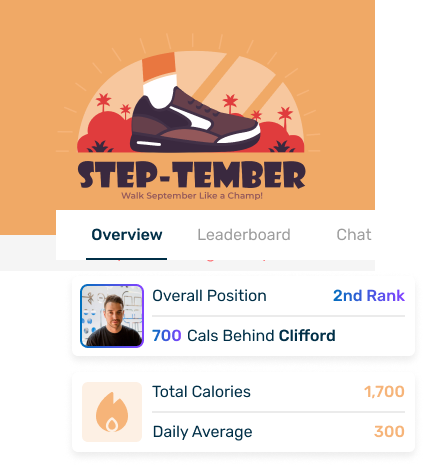
- Provide Regular Updates and Communication: Keep participants informed about the challenge, team progress, and individual achievements through regular updates and communication. This can be done through email newsletters, team meetings, or a dedicated online platform.
- Incorporate Team-Based Activities: Organize group activities or events that require physical activity, such as group walks, hikes, or fitness classes. These activities not only contribute to step counts but also strengthen team bonding and camaraderie.
- Provide Tracking Tools and Resources: Offer participants user-friendly step-tracking devices or mobile apps to monitor their progress easily. Provide wellness resources like walking route maps, fitness tips, and educational materials to support participants throughout the challenge.
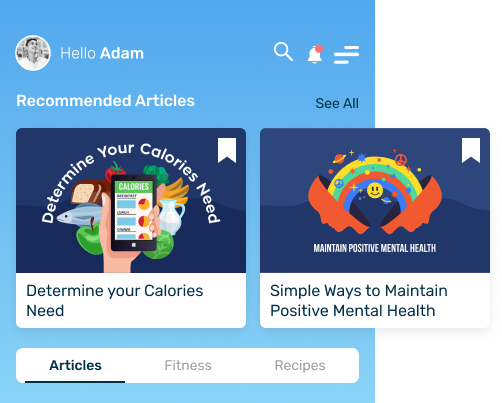
- Recognize and Celebrate Milestones: Celebrate individual and team milestones throughout the challenge. Acknowledge achievements publicly, highlight success stories, and provide positive reinforcement to boost motivation and engagement.

- Seek Feedback and Adapt: Continuously gather feedback from participants to understand their experiences and preferences. Use this feedback to make adjustments and improvements in subsequent challenges, ensuring that future events cater to their needs and interests.
Read Further:
8 Exciting Workplace Fitness Challenge Ideas
Final Thoughts
Finally, corporate step challenge should not exist in a vacuum. Your step challenges should be just one component of a multi-faceted, comprehensive wellness program that encourages positive habits from multiple angles.
A step challenge should be used in conjunction with other programs, such as exercise programs, cooking classes, weight-loss seminars, health screenings, smoking cessation programs, and so on.
Your step challenge is a great way to introduce employees to wellness and promote teamwork, but the journey does not end there.
With a full-service wellness program like Woliba, there are endless ways to integrate wellness challenges and other health initiatives to build a positive ecosystem of good health that reaches every level of your organization.
Contact us now and start a healthy company culture.



